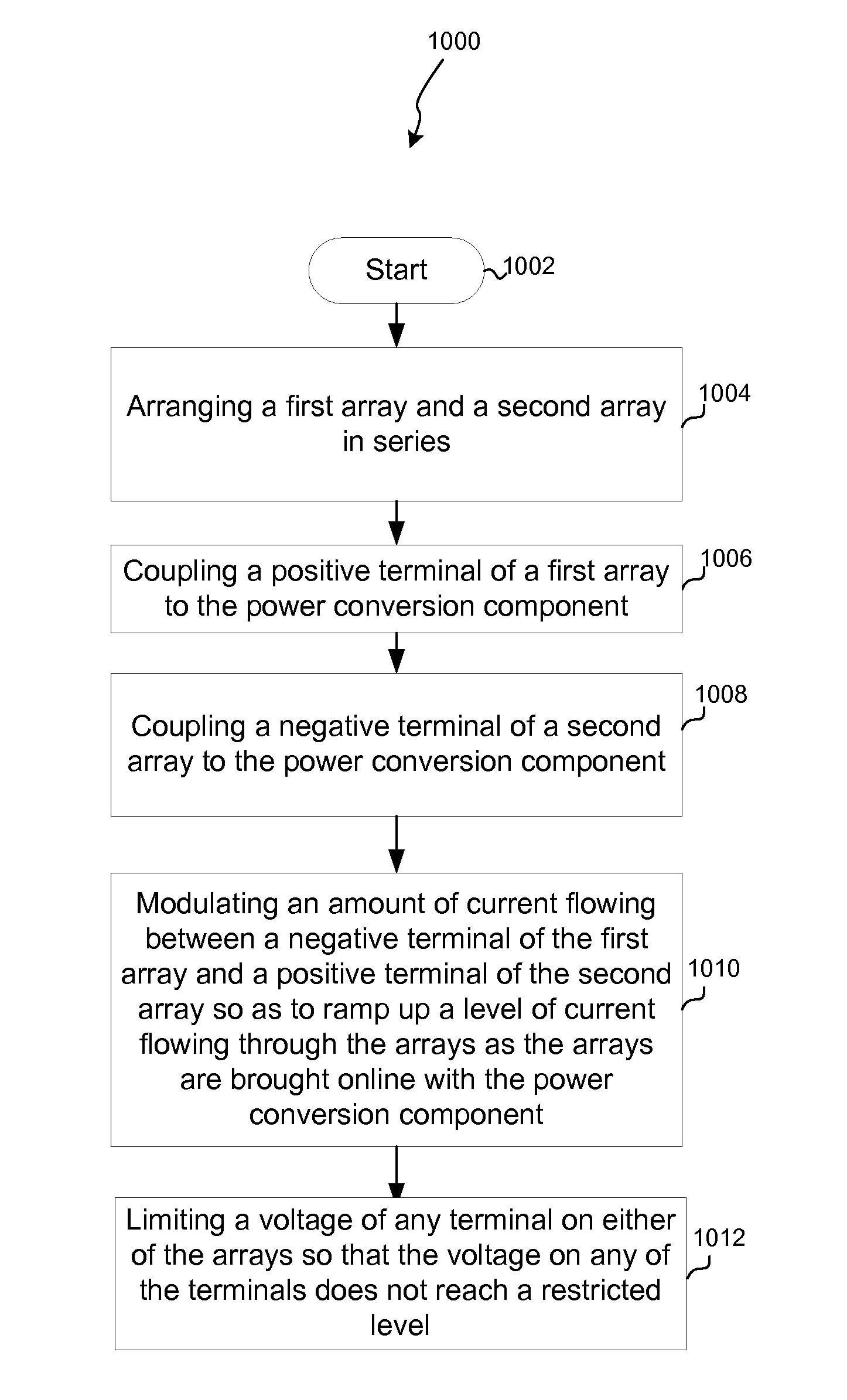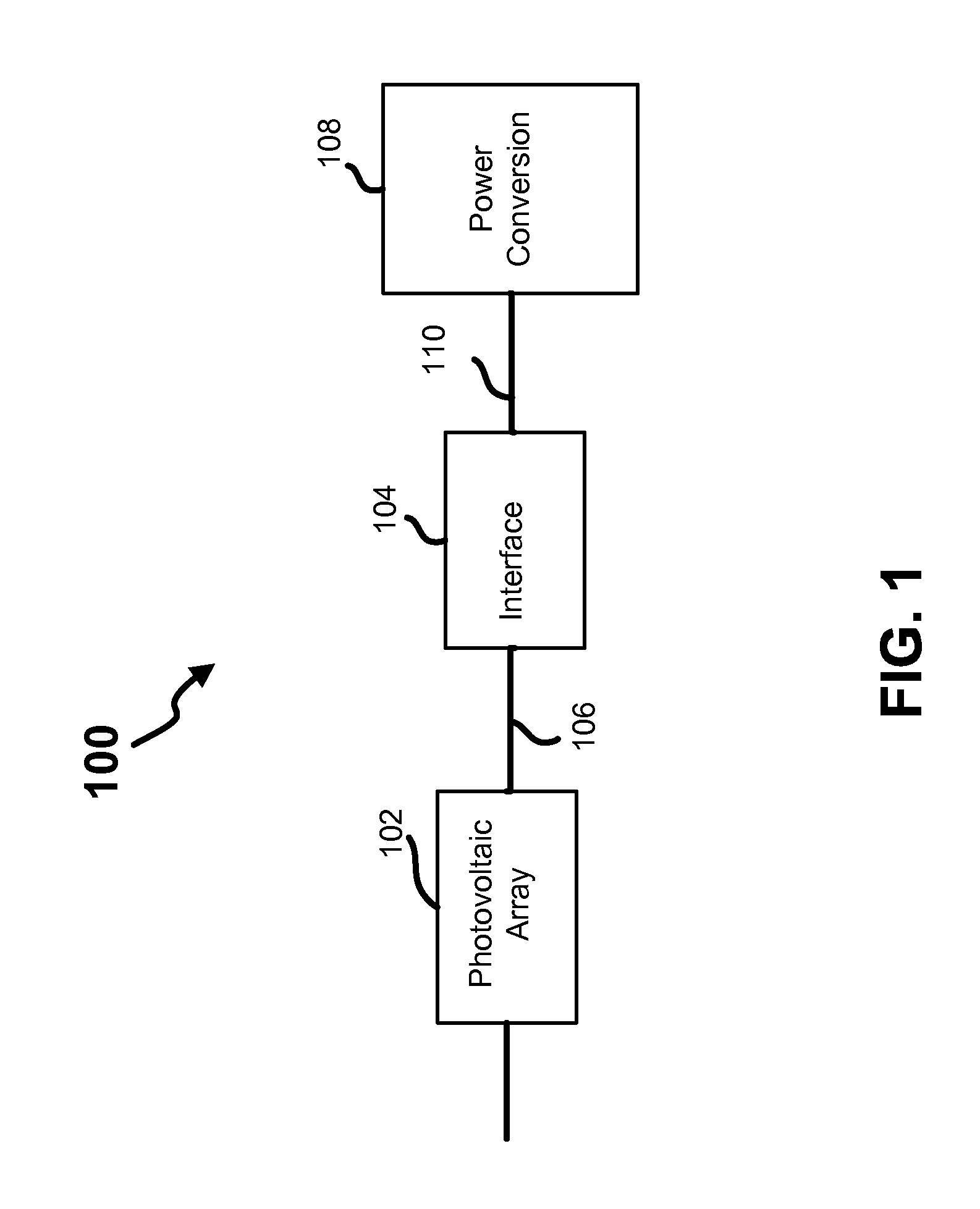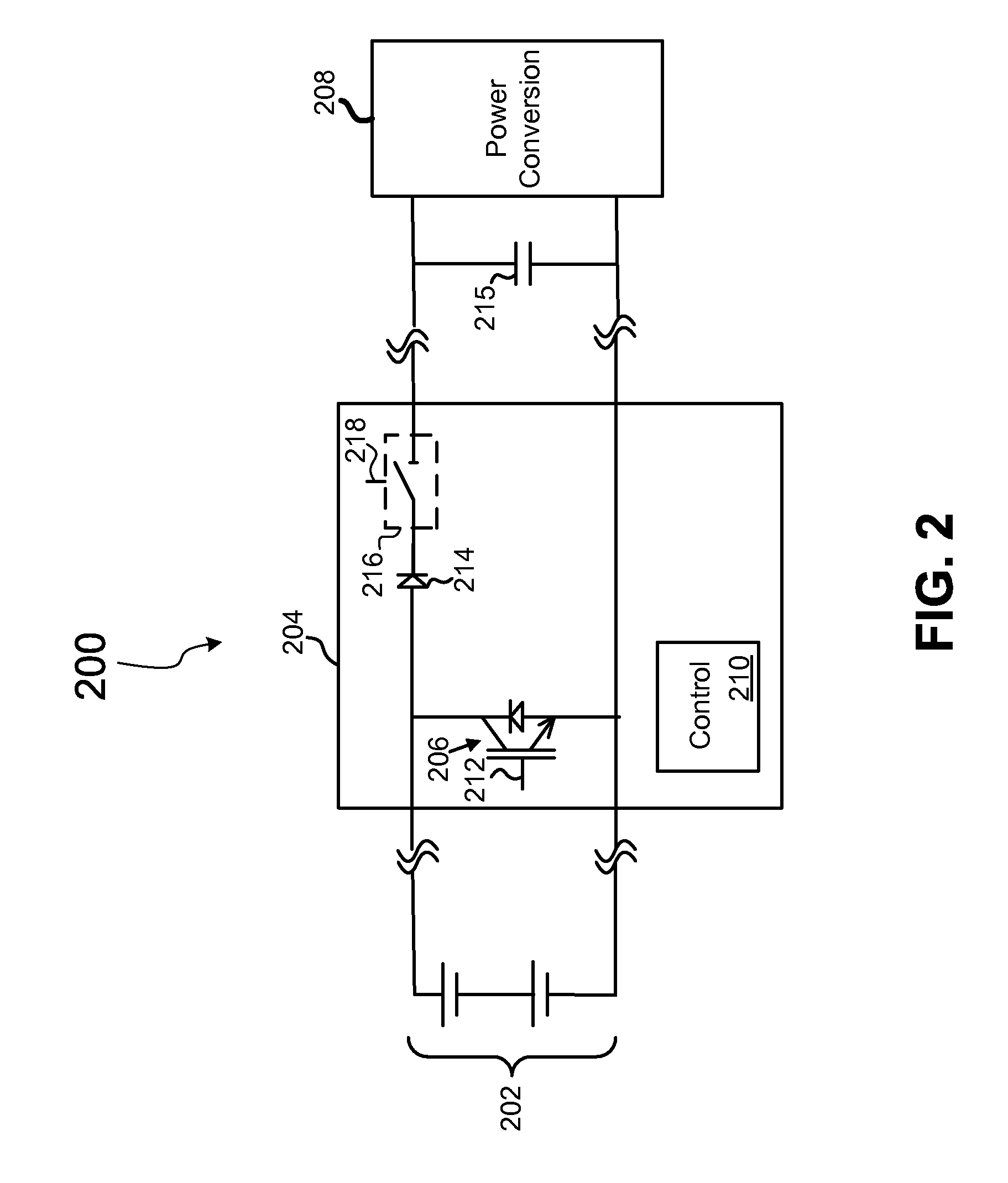Device, system, and method for managing an application of power from photovoltaic arrays
a technology of photovoltaic arrays and devices, applied in the field of apparatus and methods, can solve the problems of inverters rated for higher voltages that are often less efficient and costlier than silicon, and the load voltage of the array drops substantially
- Summary
- Abstract
- Description
- Claims
- Application Information
AI Technical Summary
Problems solved by technology
Method used
Image
Examples
Embodiment Construction
[0024]Referring now to the drawings, where like or similar elements are designated with identical reference numerals throughout the several views, and referring in particular to FIG. 1, it is a block diagram depicting a photovoltaic system 100, that includes a photovoltaic array 102 coupled to a power converter 108 via a photovoltaic (PV) interface 104.
[0025]In general, the photovoltaic array 102 converts solar energy to DC electrical power, which is converted to AC power (e.g., three-phase power) by the inverter 108. And the PV interface 104 generally operates to enable the power conversion component 108, which is designed to operate at lower voltages, to be utilized in connection with the PV array 102 that operates at least a portion of the time (e.g., while unloaded) at a voltage that exceeds the designed operating voltage of the power converter 108.
[0026]In general, the power converter 108 converts power that is applied by the array 102 from one form to another form. In some emb...
PUM
 Login to View More
Login to View More Abstract
Description
Claims
Application Information
 Login to View More
Login to View More - R&D
- Intellectual Property
- Life Sciences
- Materials
- Tech Scout
- Unparalleled Data Quality
- Higher Quality Content
- 60% Fewer Hallucinations
Browse by: Latest US Patents, China's latest patents, Technical Efficacy Thesaurus, Application Domain, Technology Topic, Popular Technical Reports.
© 2025 PatSnap. All rights reserved.Legal|Privacy policy|Modern Slavery Act Transparency Statement|Sitemap|About US| Contact US: help@patsnap.com



